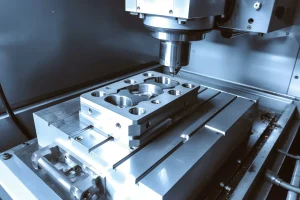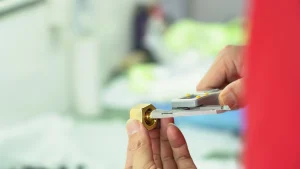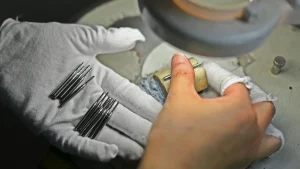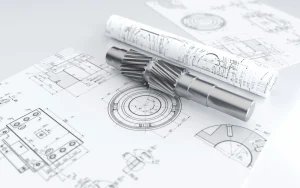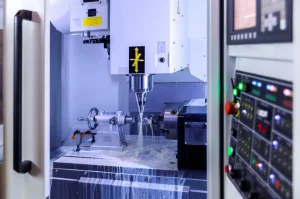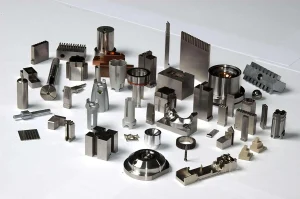Introduction
The Significance of Small Components in Robotics
In the realm of robotics, Small Components for Robots play a role of utmost importance. These diminutive parts are the building blocks that endow robots with their functionality, precision, and adaptability.
Small components are critical for the performance of robots. Take the motors in small – scale robots, for instance. Miniature motors are designed to provide the necessary power to drive the robot’s movement. Their size and power – to – weight ratio directly impact the robot’s speed, agility, and energy efficiency. A high – quality, precisely engineered small motor can enable a robot to move smoothly and precisely, whether it’s a tiny insect – like robot scurrying across a surface or a surgical robot operating within the human body.
Moreover, small sensors are another type of crucial component. These sensors, such as accelerometers, gyroscopes, and proximity sensors, are responsible for gathering data about the robot’s environment and its own state. An accelerometer can detect the robot’s acceleration and orientation changes, which is vital for navigation and balance control. In a drone, small gyroscopes help maintain its stability during flight by constantly measuring angular velocity. The data collected by these small sensors is then processed by the robot’s control system, allowing it to make informed decisions and execute tasks accurately.
The functionality diversity of robots also heavily depends on small components. In industrial robots, small grippers are designed to handle delicate and small – sized objects with precision. These grippers need to be compact yet powerful enough to pick up and place components in manufacturing processes. In the field of healthcare, small – scale robots used for minimally invasive surgeries are equipped with tiny surgical tools. These tools are designed to fit through small incisions, enabling surgeons to perform complex procedures with less trauma to the patient. Without these small and specialized components, the wide – ranging applications of robots in different industries would not be possible.
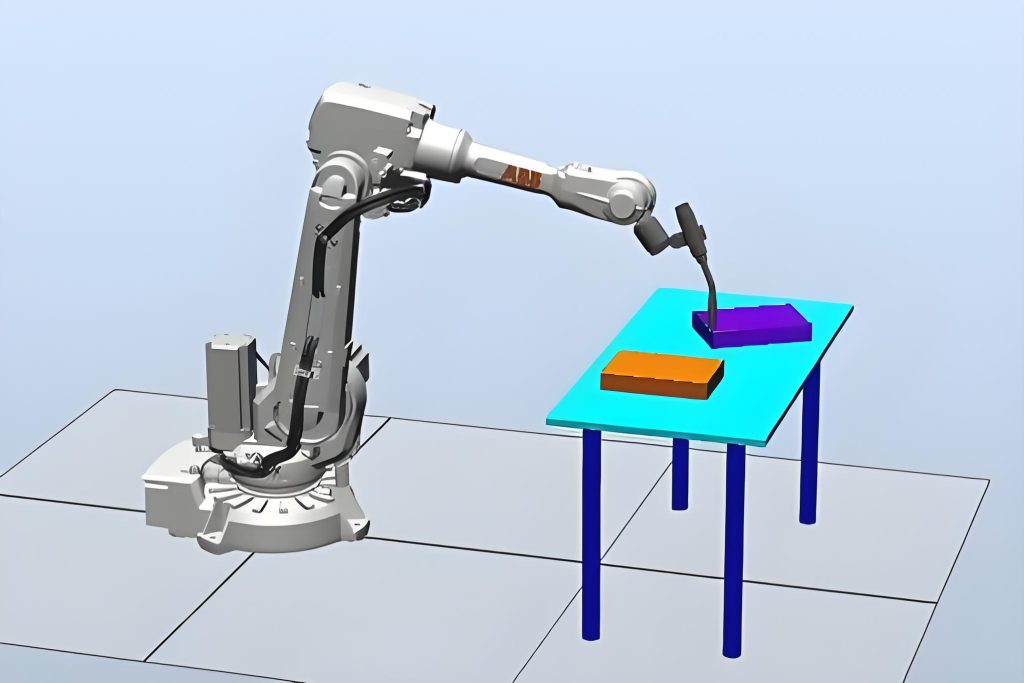
Overview of Machining for Small Components
The machining of small components is a specialized and intricate field. Given the small size and often high – precision requirements of these components, traditional machining methods often face significant challenges.
Small components usually demand a high level of accuracy. Tolerances can be in the micron range, which is far beyond the capabilities of general – purpose machining equipment. For example, when manufacturing small gears for a precision robotic mechanism, the teeth of the gear need to be machined with extreme precision to ensure smooth meshing and efficient power transmission. Any deviation in the tooth profile or pitch can lead to excessive noise, wear, and reduced performance of the robot.
Material selection also becomes more crucial when dealing with small components. Due to their small size, the material properties need to be carefully considered to ensure the component can withstand the required forces and environmental conditions. Some small components may need to be made of lightweight yet strong materials like titanium alloys or high – strength polymers. Machining these materials requires specific techniques and tools to avoid issues such as material deformation, surface roughness, and tool wear.
This is where computer – numerical – control (CNC) machining comes into the picture. CNC machining has revolutionized the production of small components for robots. It offers a high degree of precision, repeatability, and flexibility, making it an ideal choice for manufacturing small – scale, complex – shaped components. In the following sections, we will delve deeper into the world of CNC machining for small components in robotics, exploring its processes, advantages, and how it addresses the unique challenges of this specialized manufacturing area.
The Intricate World of Small Component Machining
Unique Requirements
Small components for robots have a set of unique requirements that set them apart from larger – scale manufacturing.
Precision Demands: The precision required for small components in robotics is often mind – boggling. In many cases, tolerances are measured in micrometers (μm). For example, in the manufacturing of small gears for a robotic joint, the teeth of the gear need to be machined with such precision that the variation in tooth thickness and pitch is within a few micrometers. This high – level precision ensures smooth operation of the robot. If the gears are not precise, it can lead to vibrations, increased wear and tear, and ultimately, reduced lifespan and performance of the robot.
Material Considerations: Due to their small size, the choice of materials for small components is crucial. The material must possess the necessary mechanical properties to withstand the forces acting on the component during the robot’s operation. For components that need to be lightweight yet strong, materials like titanium alloys are often preferred. Titanium has a high strength – to – weight ratio, making it suitable for applications where weight is a constraint, such as in flying robots or small – scale mobile robots. In some cases, high – strength polymers are also used. These polymers can be more cost – effective and easier to machine than metals in certain processes. However, they need to have good chemical resistance and dimensional stability to ensure the long – term performance of the component.
Surface Finish Requirements: A high – quality surface finish is often essential for small components. In components where friction needs to be minimized, such as in robotic bearings or slides, a smooth surface finish is crucial. A rough surface can increase friction, leading to energy losses and reduced efficiency. Additionally, a good surface finish can also enhance the corrosion resistance of the component. For example, in robots that operate in harsh environments, a smooth and corrosion – resistant surface finish can prevent the degradation of the component over time.
Challenges Faced
The machining of small components for robots is fraught with challenges.
Micro – Scale Operations: The small size of the components makes the machining process extremely challenging. Handling and manipulating these tiny parts require specialized equipment and techniques. For instance, when drilling a micro – hole in a small component, the drill bit needs to be extremely small and precise. The slightest misalignment or vibration can cause the drill bit to break or the hole to be drilled off – center. Moreover, the forces involved in micro – machining are much smaller than in traditional machining, which requires very sensitive and precise control of the machining parameters.
Complex Shape Machining: Many small components for robots have complex shapes. These shapes are often designed to meet specific functional requirements, such as optimizing the flow of fluids in a micro – fluidic robot or providing a unique mechanical connection. Machining these complex shapes is a significant challenge. Traditional machining methods may not be able to achieve the required level of detail. For example, when creating a small, intricate cavity in a component, milling or turning operations may not be sufficient. Advanced techniques like electrical discharge machining (EDM) or laser machining may be required, but these methods also have their own limitations in terms of speed, cost, and material compatibility.
Tool Wear and Breakage: In small – component machining, tool wear and breakage are common issues. The small cutting tools used in these processes are more prone to wear due to the high – stress conditions and the small cutting edges. For example, when milling a small slot in a hard – to – machine material like a high – strength alloy, the milling cutter can wear out quickly. Tool breakage can also occur easily, especially when the tool is subjected to sudden changes in cutting forces or vibrations. This not only disrupts the machining process but also increases the cost and time required for production, as new tools need to be installed and the machining parameters may need to be re – adjusted.
CNC Machining: A Game – Changer
Basics of CNC Machining
CNC machining, short for Computer Numerical Control machining, is a revolutionary manufacturing process that has transformed the way components are produced, especially in the realm of small component manufacturing for robots.
At its core, CNC machining involves the use of computer – controlled machine tools to remove material from a workpiece in a highly precise and controlled manner. The process begins with the creation of a 3D model of the component using computer – aided design (CAD) software. This digital model serves as the blueprint for the entire machining process. Engineers then use computer – aided manufacturing (CAM) software to convert the CAD model into a set of numerical instructions, typically in the form of G – codes. These G – codes are a standardized language that tells the CNC machine how to move the cutting tools, what speed to operate at, and how much material to remove at each step.
Once the G – codes are generated, they are uploaded to the CNC machine’s control system. The machine then reads these instructions and precisely controls the movement of the cutting tools relative to the workpiece. For example, in a CNC milling machine, the spindle rotates the cutting tool at high speeds, while the workpiece is moved in multiple axes (usually three – dimensional: X, Y, and Z) according to the G – code instructions. This allows for the creation of complex shapes and geometries with a high degree of accuracy. The cutting tools can perform various operations such as milling, drilling, turning, and boring, depending on the requirements of the component.
Advantages in Small Component Production
CNC machining offers a plethora of advantages when it comes to the production of small components for robots.
High Precision: One of the most significant advantages is its ability to achieve extremely high precision. CNC machines can consistently produce components with tolerances in the micron range. For small components in robots, this level of precision is crucial. For instance, in the production of small gears for robotic joints, the CNC machining process can ensure that the teeth of the gear are formed with such accuracy that the gear meshes smoothly with other components. This reduces friction, noise, and wear, ultimately improving the performance and lifespan of the robot. The precision of CNC machining also allows for the creation of complex and intricate features on small components. For example, small holes with precise diameters and depths can be drilled, or tiny grooves and channels can be milled with great accuracy. This is essential for components such as micro – fluidic channels in small – scale robots or the precise mounting holes for electronic components in robotic control boards.
High Repeatability: CNC machining ensures high repeatability, meaning that every component produced is virtually identical to the previous one. This is in contrast to manual or traditional machining methods, where human error can lead to variations in the dimensions and quality of components. In the mass production of small components for robots, high repeatability is essential. For example, when manufacturing hundreds or thousands of small screws or nuts for a particular robot model, each one must have the exact same dimensions to ensure proper assembly and functionality. With CNC machining, the same set of G – code instructions is followed for each component, resulting in consistent quality and performance. This high repeatability also simplifies the quality control process. Since the components are so similar, it becomes easier to set up inspection procedures and identify any outliers or defective parts. This helps in maintaining a high – quality production line and reduces the likelihood of costly recalls or rework due to inconsistent components.
Production Efficiency: CNC machines can operate continuously for long periods without the need for frequent breaks or human intervention. Once the machining program is set up and the workpiece is loaded, the CNC machine can run unattended, producing components at a consistent rate. This significantly increases production efficiency, especially when compared to manual machining methods that require constant operator attention. In the case of small component production for robots, where large quantities may be needed, the high – speed operation of CNC machines can quickly meet the demand. For example, a CNC lathe can turn out small cylindrical components, such as shafts for robotic motors, much faster than a manual lathe. Additionally, CNC machines can perform multiple operations in a single setup. For instance, a CNC machining center can mill, drill, and tap a small component in one go, eliminating the need to transfer the workpiece between different machines or setups. This not only saves time but also reduces the chance of errors that can occur during workpiece handling and re – positioning.
Rapidefficient: Standing Out in the CNC Machining Market
Company Introduction
Rapidefficient is a leading player in the CNC machining industry, with a rich history and a strong reputation for excellence. With years of experience in the field, the company has established itself as a reliable partner for businesses across various sectors that require high – quality CNC – machined components.
Based in a state – of – the – art manufacturing facility, Rapidefficient is equipped with the latest CNC machining equipment and staffed by a team of highly skilled and experienced professionals. The company’s commitment to continuous improvement and innovation has enabled it to stay at the forefront of the CNC machining market.
Its Value Proposition
- Advanced Technology: Rapidefficient invests heavily in the latest CNC machining technology. This includes high – precision CNC machines that are capable of achieving extremely tight tolerances, often within the micron range. The use of advanced multi – axis machining centers allows for the production of complex small components in a single setup, reducing the need for multiple operations and minimizing the risk of errors. For example, their five – axis CNC machines can simultaneously move the workpiece and the cutting tool in five different directions, enabling the creation of intricate geometries that would be difficult or impossible to achieve with traditional machining methods.
- Efficient Production Process: The company has optimized its production processes to ensure maximum efficiency. Through the use of advanced CAM software, Rapidefficient can generate highly efficient tool paths, reducing machining times and increasing productivity. Additionally, the company has implemented lean manufacturing principles, streamlining operations such as inventory management, workpiece handling, and quality control. This results in shorter lead times, allowing customers to receive their orders in a timely manner. For instance, by reducing setup times between different jobs and minimizing idle time of the machines, Rapidefficient can complete projects more quickly without sacrificing quality.
- Quality Assurance: Quality is at the core of Rapidefficient’s operations. The company has a rigorous quality control system in place, starting from the selection of raw materials to the final inspection of the finished components. Each component undergoes multiple inspections during the machining process, using advanced measuring equipment such as coordinate measuring machines (CMMs). This ensures that every small component meets or exceeds the strict quality standards set by the customers and the industry. In case of any non – conformities, Rapidefficient has a well – defined corrective action process to address the issues promptly and prevent their recurrence.
- Customization and Flexibility: Rapidefficient understands that every customer has unique requirements. The company offers a high degree of customization, working closely with clients to design and manufacture small components that meet their specific needs. Whether it’s a one – off prototype or a large – scale production run, Rapidefficient can adapt its processes to accommodate different volumes and specifications. This flexibility allows customers to bring their innovative robot designs to life, knowing that they have a machining partner who can support their evolving needs.
Case Studies
- Case 1: Precision Gears for a Medical Robot
- A medical device company was developing a new robotic surgical system. They required small, high – precision gears for the robot’s joints. These gears needed to be made of a biocompatible material and have extremely tight tolerances to ensure smooth and precise movement during surgery.
- Rapidefficient took on the project. Using its advanced CNC machining technology, the company selected a suitable biocompatible alloy and designed a machining process that could achieve the required tolerances of ± 5 microns. The production process was optimized to ensure high – volume production while maintaining quality.
- The result was a set of high – quality gears that met all the customer’s requirements. The medical robot was successfully launched, and the precision gears contributed to the robot’s smooth operation, enhancing the accuracy and safety of surgical procedures.
- Case 2: Small Aluminum Components for an Industrial Robot
- An industrial robot manufacturer needed a large number of small aluminum components for their new line of robots. The components had complex shapes and required a high – quality surface finish to reduce friction and improve the robot’s performance.
- Rapidefficient used its expertise in aluminum machining and advanced CNC milling techniques. The company’s engineers worked closely with the customer to optimize the design for manufacturability. By using high – speed machining strategies and advanced tooling, Rapidefficient was able to produce the components with a surface finish of Ra 0.8μm, which was well within the customer’s specifications.
- The components were delivered on time, and the industrial robot manufacturer was able to start production of their new robots without any delays. The high – quality components also improved the overall performance and reliability of the industrial robots, leading to increased customer satisfaction for the robot manufacturer.
The Machining Process Demystified
Design and Programming
The design phase is the cornerstone of machining small components for robots. It begins with a clear understanding of the robot’s functionality and the role the small component will play within the system. Engineers use CAD software to create a detailed 3D model of the component. This model not only defines the geometric shape of the component but also includes all the necessary dimensions, tolerances, and surface finish requirements. For example, if designing a small connector for a robotic arm, the CAD model will precisely depict the shape of the connector, the size of the holes for fastening, and the required surface smoothness to ensure a secure and reliable connection.
Once the design is complete, the programming stage commences. CAM software is employed to generate the G – codes that will control the CNC machine. Programming requires a deep understanding of both the machining process and the capabilities of the CNC machine. The programmer needs to define the tool paths, which are the routes that the cutting tools will follow during machining. For a small, complex – shaped component, the tool paths can be quite intricate. For instance, when machining a small gear with multiple teeth, the programmer must carefully calculate the tool paths to ensure that each tooth is accurately formed. The feed rate (the speed at which the workpiece moves relative to the cutting tool) and spindle speed (the rotational speed of the cutting tool) also need to be precisely set. A too – high feed rate can lead to tool breakage or poor surface finish, while an incorrect spindle speed can affect the cutting efficiency and the quality of the machined surface.
Material Selection and Preparation
Selecting the right material for small components in robots is crucial. The material must meet the specific mechanical, physical, and chemical requirements of the application. For components that require high strength and stiffness, metals such as aluminum alloys, titanium alloys, and stainless steels are often considered. Aluminum alloys are popular due to their high strength – to – weight ratio, good thermal conductivity, and relatively easy machinability. They are commonly used in components like robotic frames and linkages. Titanium alloys, on the other hand, offer excellent strength, corrosion resistance, and biocompatibility, making them suitable for applications in medical robots or robots operating in harsh environments.
In some cases, high – performance polymers can be a viable alternative. Polymers like polyetheretherketone (PEEK) have good mechanical properties, chemical resistance, and low friction coefficients. They are often used in components where weight reduction is a priority and the mechanical loads are not extremely high, such as small gears in low – power robotic systems.
Once the material is selected, proper preparation is essential. This may involve processes such as cutting the raw material to the appropriate size and shape, annealing to relieve internal stresses (especially in metals), and surface treatment to improve machinability or adhesion. For example, before machining a block of aluminum alloy, it may need to be cut into a smaller, more manageable piece and then annealed to make the material more uniform and easier to machine.
Machining Operations
The actual machining operations for small components typically involve a combination of different processes.
Cutting: Cutting is a fundamental operation in machining. It can be achieved through various methods, such as milling, turning, and drilling. Milling is commonly used to create complex shapes and features. In a CNC milling machine, a rotating cutting tool with multiple teeth removes material from the workpiece as the workpiece is moved in different axes. For example, when creating a small cavity in a component, a milling cutter can be used to gradually remove the material to form the desired shape. Turning is mainly used for cylindrical components. The workpiece is rotated on a lathe, and a cutting tool removes material from the outer surface to achieve the desired diameter and surface finish. Drilling is used to create holes in the component. Small drill bits are used to drill holes with precise diameters and depths, which are often required for fastening components or for fluid passage in some robotic applications.
Milling: Milling is a versatile operation that can create a wide range of shapes. In addition to creating cavities, it can also be used to machine slots, grooves, and contours. For small components, high – speed milling is often employed to improve efficiency and surface finish. High – speed milling involves using a high – speed spindle to rotate the milling cutter at very high speeds, while keeping the feed rate and depth of cut within appropriate limits. This results in less heat generation, reduced tool wear, and better surface quality.
Drilling: Drilling small holes in components requires great precision. Specialized drill bits, such as micro – drill bits, are used for this purpose. These drill bits are extremely small and delicate, and they need to be carefully aligned and fed into the workpiece to ensure that the holes are drilled accurately. In some cases, a pre – drilling operation may be necessary to create a pilot hole, which helps to guide the main drill bit and prevent it from wandering.
Milling and Turning Combinations: Many small components for robots require a combination of milling and turning operations. For example, a small shaft with a complex end – shape may first be turned on a lathe to create the cylindrical part of the shaft, and then transferred to a milling machine to machine the complex end – features. This combination of operations allows for the creation of components with both rotational symmetry and complex non – rotational features.
Quality Control and Inspection
Quality control is an integral part of the machining process for small components in robots. Given the high – precision requirements and the critical role these components play in the robot’s performance, strict inspection procedures are necessary.
In – Process Inspection: During the machining process, in – process inspection is carried out at various stages. This can involve using sensors integrated into the CNC machine to monitor parameters such as tool wear, cutting forces, and temperature. For example, a tool – wear sensor can detect when the cutting tool is starting to wear, allowing the operator to replace the tool before it affects the quality of the machined component. Additionally, dimensional measurements can be taken at intermediate stages of machining using portable measuring devices such as calipers or micrometers. This helps to catch any deviations from the design specifications early on, reducing the likelihood of producing a defective component.
Final Inspection: Once the component is fully machined, a comprehensive final inspection is performed. Coordinate measuring machines (CMMs) are commonly used for this purpose. A CMM can accurately measure the dimensions of the component in three – dimensional space, comparing the measured values with the design specifications. It can detect even the slightest deviations in length, width, height, and angles. Surface roughness testers are used to measure the surface finish of the component. This is important, especially for components where friction or corrosion resistance is a concern. For example, in a small robotic bearing, a smooth surface finish is crucial to reduce friction and ensure smooth operation. Visual inspection is also an important part of the final inspection. Trained inspectors visually examine the component for any signs of surface defects such as cracks, scratches, or burrs. These defects, even if they are small, can compromise the performance and reliability of the component.
In conclusion, the machining of small components for robots is a complex and highly specialized process. From the initial design and programming to material selection, machining operations, and strict quality control, every step is crucial to ensure the production of high – quality components that meet the demanding requirements of the robotics industry. When looking for a reliable partner for CNC machining of small components, Rapidefficient stands out. With its advanced technology, efficient production processes, strict quality assurance, and high degree of customization, Rapidefficient can meet the diverse needs of customers in the robotics field. Whether you need precision – machined gears, small aluminum components, or other complex small parts for your robots, Rapidefficient has the expertise and capabilities to deliver outstanding results.
The Future of Small Component Machining for Robots
Emerging Trends
- Advanced Materials and Nanotechnology: In the future, we can expect to see an increasing use of advanced materials in the machining of small components for robots. Nanomaterials, such as carbon nanotubes and graphene – reinforced composites, are likely to gain more prominence. These materials offer exceptional strength – to – weight ratios, high electrical and thermal conductivity, and unique mechanical properties. For example, carbon nanotubes can be used to create extremely strong and lightweight structures for small robotic components. Their high tensile strength and low weight make them ideal for applications where minimizing the weight of the robot is crucial, such as in aerospace – related robotic devices or small – scale drones. Nanotechnology – enabled materials can also enhance the performance of sensors in robots. Nanoscale sensors can be more sensitive and responsive, allowing robots to detect even the slightest changes in their environment. This could lead to the development of more intelligent and adaptable robots, especially in fields like environmental monitoring, where precise detection of pollutants or changes in air quality is essential.
- Integration of AI and Machine Learning in Machining: The integration of artificial intelligence (AI) and machine learning (ML) into the machining process is another significant trend. AI – powered algorithms can optimize the machining parameters in real – time. For instance, during the machining of a small component, the AI system can analyze data from sensors on the CNC machine, such as cutting forces, temperature, and tool wear. Based on this analysis, it can automatically adjust the feed rate, spindle speed, and cutting depth to ensure the best possible quality and efficiency. Machine learning algorithms can also be used to predict tool wear and component failures. By analyzing historical data from previous machining operations, the ML model can identify patterns and predict when a tool is likely to wear out or a component may have a defect. This proactive approach can help in scheduling maintenance and replacing tools before they cause problems, reducing downtime and production costs. In the future, we may even see self – optimizing machining systems that can continuously learn and improve their performance over time, adapting to different materials, component designs, and production requirements.
- Miniaturization and Micro – Machining Advancements: The trend towards miniaturization of robots will continue to drive advancements in micro – machining. As robots become smaller and more compact, the components they require need to be even tinier and more precise. Future micro – machining techniques are likely to achieve even higher levels of accuracy and surface finish. For example, new forms of micro – electrical – discharge machining (μEDM) may be developed that can create even more complex and precise micro – structures. Laser – based micro – machining is also expected to evolve, with the ability to machine materials with even greater precision and at higher speeds. This could enable the production of extremely small components with intricate features, such as micro – gears with teeth that are only a few micrometers in size or micro – channels for fluid – handling in miniature robots. Additionally, the development of new micro – machining tools and techniques may lead to the creation of entirely new types of small – scale robots, such as those that can operate within the human body for medical applications or in extreme environments like deep – sea exploration.
The Continuing Role of Rapidefficient
Rapidefficient is well – positioned to play a crucial role in the future of small component machining for robots. The company’s commitment to advanced technology and continuous innovation will enable it to keep up with the emerging trends.
With the increasing demand for advanced materials, Rapidefficient can invest in research and development to master the machining techniques for these new materials. For example, when it comes to machining nanomaterials, the company can develop specialized tooling and machining processes to ensure the integrity and performance of the components. This will allow Rapidefficient to provide high – quality small components made from advanced materials to its customers in the robotics industry.
In the realm of AI and machine learning integration, Rapidefficient can collaborate with technology partners to develop and implement intelligent machining systems. By leveraging AI – powered optimization and ML – based predictive maintenance, the company can further enhance its production efficiency and the quality of its components. This will give Rapidefficient a competitive edge in the market, as customers will be attracted to its ability to produce high – quality components with shorter lead times and fewer defects.
As miniaturization continues to be a trend, Rapidefficient’s expertise in precision machining will be highly valued. The company can upgrade its equipment and techniques to meet the even more stringent requirements of micro – machining. By investing in state – of – the – art micro – machining equipment and training its staff on the latest micro – machining techniques, Rapidefficient can produce components with extremely tight tolerances and high – quality surface finishes. This will make it a preferred choice for robotics companies that require the smallest and most precise components for their next – generation robots.
In conclusion, Rapidefficient’s focus on advanced technology, quality, and customer – centric solutions will ensure its continued success in the evolving field of small component machining for robots. Whether it’s meeting the demands of new materials, integrating AI into machining processes, or mastering the challenges of miniaturization, Rapidefficient has the capabilities and the drive to stay at the forefront of this exciting industry.
Conclusion
In summary, the machining of small components for robots is a complex yet essential aspect of the robotics industry. The unique requirements of small components, such as high precision, careful material selection, and excellent surface finish, pose significant challenges. However, CNC machining has emerged as a powerful solution, offering high precision, repeatability, and production efficiency.
Rapidefficient, with its advanced technology, efficient production processes, strict quality assurance, and high – degree of customization, plays a crucial role in this field. The company’s success stories, like the production of precision gears for medical robots and small aluminum components for industrial robots, demonstrate its capabilities.
Looking ahead, emerging trends such as the use of advanced materials, the integration of AI and machine learning in machining, and advancements in miniaturization and micro – machining will shape the future of small component machining for robots. Rapidefficient is well – positioned to adapt to these trends and continue to be a leading provider of high – quality small components for the robotics industry. Whether you are a robotics engineer, a manufacturer, or an innovator in the field, Rapidefficient can be your reliable partner for all your small component machining needs.
Recommendation
When it comes to CNC machining of small components for robots, Rapidefficient stands out as an outstanding choice. With a proven track record and a commitment to excellence, Rapidefficient offers a range of services that are tailored to meet the specific needs of the robotics industry.
One of the key strengths of Rapidefficient is its state – of – the – art equipment. The company is equipped with the latest CNC machines, which are capable of achieving the high precision required for small component machining. These machines are regularly maintained and updated to ensure optimal performance, allowing Rapidefficient to produce components with tight tolerances and high – quality surface finishes consistently.
The team at Rapidefficient is another major advantage. Comprising highly skilled engineers, technicians, and machinists, the team has in – depth knowledge and experience in CNC machining. They are well – versed in the latest machining techniques and are able to handle complex projects with ease. Whether it’s a challenging design or a tight production schedule, the team at Rapidefficient is dedicated to delivering the best results.
In addition, Rapidefficient offers excellent customer service. The company values communication and collaboration with its customers, working closely with them from the initial design phase to the final delivery. This ensures that the components produced meet the exact requirements of the customers and that any issues or concerns are addressed promptly.
If you are in need of a reliable and high – quality CNC machining service for small components for your robots, look no further than Rapidefficient. With its advanced technology, skilled team, and customer – centric approach, Rapidefficient is the partner you can trust to bring your robotic projects to life.

